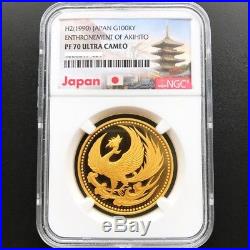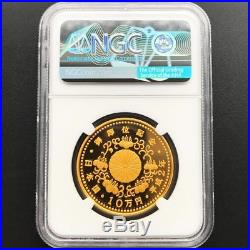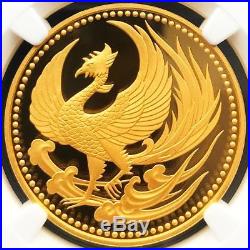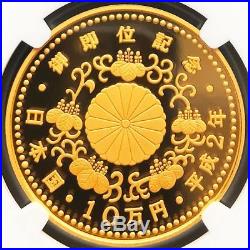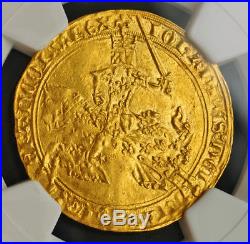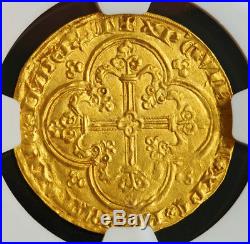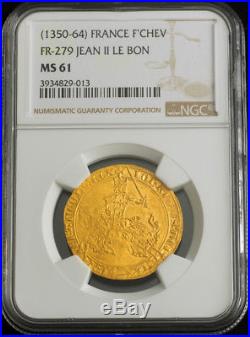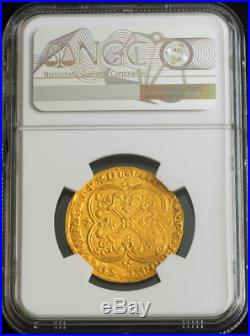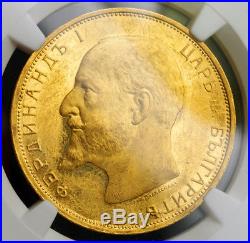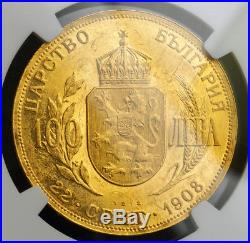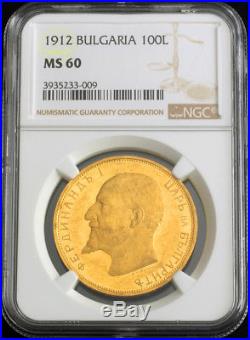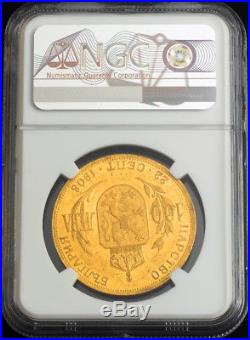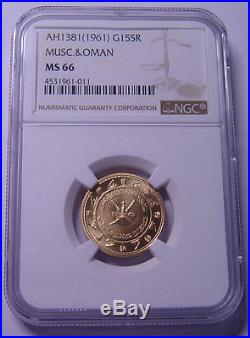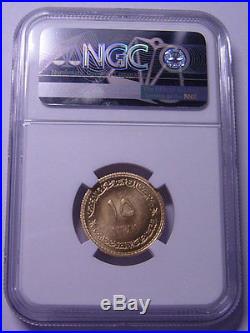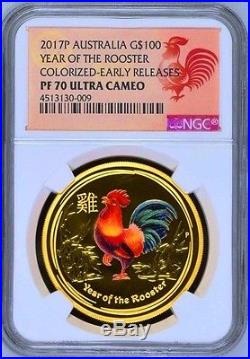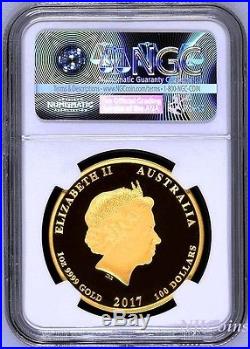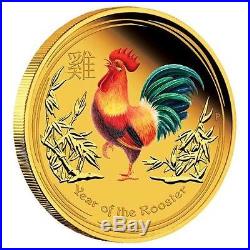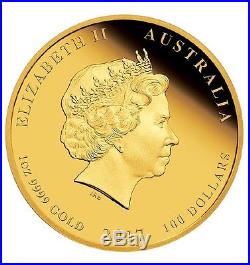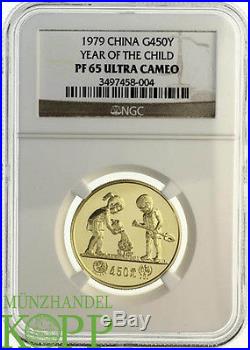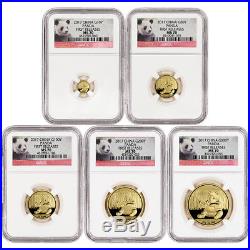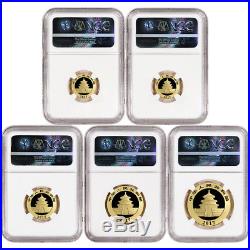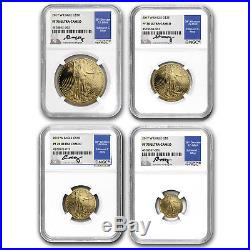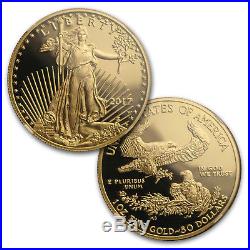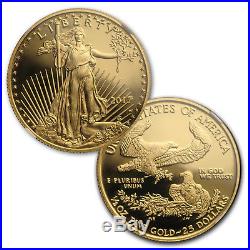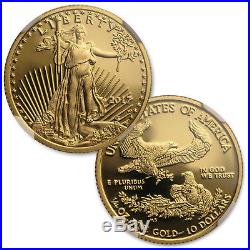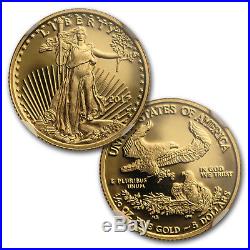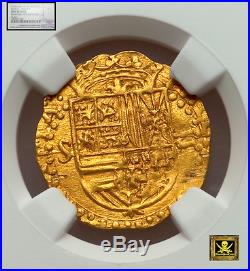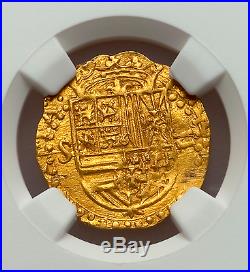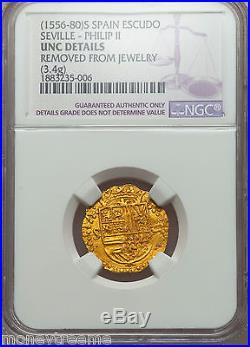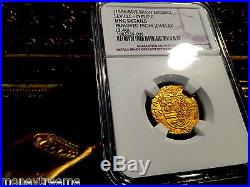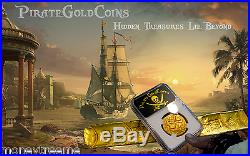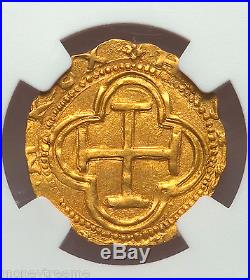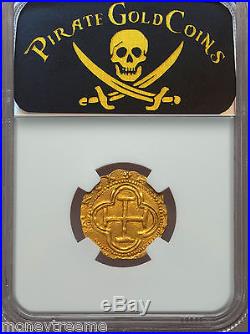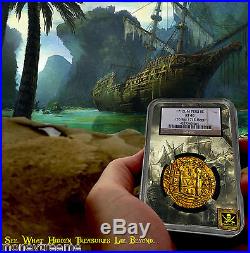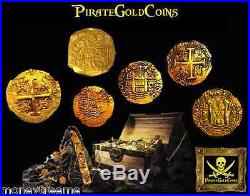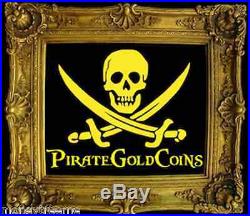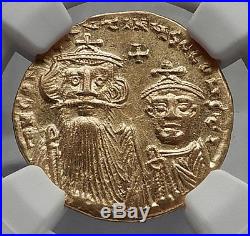
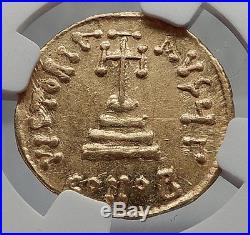
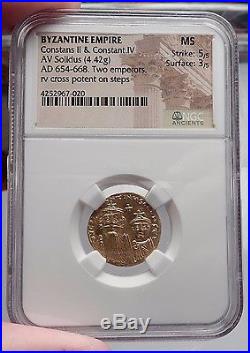

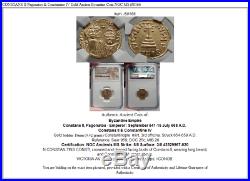

Item: i58166 Authentic Ancient Coin of. Byzantine Empire Constans II, Pagonatos – Emperor: September 641-15 July 668 A. Constans II & Constantine IV Gold Solidus 19mm (4.42 grams) Constantinople mint, 3rd officina. Reference: Sear 959; DOC 25c; MIB 26 Certification: NGC Ancients MS Strike: 5/5 Surface: 3/5 42529967-020 N CONSTAN-TINS CONSTI, crowned and draped facing busts of Constans II, wearing long beard, and Constantine IV; cross above. VICTORIA AV, cross potent set on three steps; //CONOB. 652 14 September 685, sometimes incorrectly called Pogonatos , “the Bearded”, out of confusion with his father. Was Byzantine Emperor from 668 to 685. His reign saw the first serious check to nearly 50 years of uninterrupted Islamic expansion, while his calling of the Sixth Ecumenical Council saw the end of the monothelitism controversy in the Byzantine Empire. The eldest son of Constans II , Constantine IV had been named a co-emperor with his father in 654. He had been given the responsibility of managing the affairs at Constantinople during his fathers extended absence in Italy and became senior Emperor when Constans was assassinated in 668. His mother was Fausta , daughter of patrician Valentinus. The first task before the new Emperor was the suppression of the military revolt in Sicily under Mezezius which had led to his father’s death. Within seven months of his accession, Constantine IV had dealt with the insurgency with the support of Pope Vitalian. But this success was overshadowed by troubles in the east. As early as 668 the Caliph Muawiyah I received an invitation from Saborios , the commander of the troops in Armenia , to help overthrow the Emperor at Constantinople. He sent an army under his son Yazid against the Eastern Roman Empire. Yazid reached Chalcedon and took the important Byzantine center Amorion. While the city was quickly recovered, the Arabs next attacked Carthage and Sicily in 669. In 670 the Arabs captured Cyzicus and set up a base from which to launch further attacks into the heart of the Empire. Their fleet captured Smyrna and other coastal cities in 672. Finally, in 672, the Arabs sent a large fleet to attack Constantinople by sea. While Constantine was distracted by this, the Slavs unsuccessfully attacked Thessalonika. The Siege of Constantinople: 674-678. Main article: Siege of Constantinople (674678). Commencing in 674, the Arabs launched the long-awaited siege of Constantinople. The great fleet that had been assembled set sail under the command of Abdu’l-Rahman ibn Abu Bakr before the end of the year; during the winter months some of the ships anchored at Smyrna , the rest off the coast of Cilicia. Additional squadrons reinforced the forces of Abd ar-Rahman before they proceeded to the Hellespont , into which they sailed in about April 674. From April to September 674 the fleet lay moored from the promontory of Hebdomon, on the Propontis , as far as the promontory of Kyklobion , near the Golden Gate , and throughout those months continued to engage with the Byzantine fleet which defended the harbour from morning to evening. Knowing that it was only a matter of time before Constantinople was under siege, Constantine had ensured that the city was well provisioned. He also constructed a large number of fireships and fast-sailing boats provided with tubes or siphons for squirting fire. This is the first known use of Greek fire in combat, which was one of the key advantages that the Byzantines possessed. In September the Arabs, having failed in their attempts to take the city, sailed to Cyzicus, which they made their winter quarters. Over the following five years, the Arabs would return each spring to continue the siege of Constantinople, but with the same results. The city survived, and finally in 678 the Arabs were forced to raise the siege. The Arabs withdrew and were almost simultaneously defeated on land in Lycia in Anatolia. This unexpected reverse forced Muawiyah I to seek a truce with Constantine. The terms of the concluded truce required the Arabs to evacuate the islands they had seized in the Aegean , and to pay an annual tribute to the Emperor consisting of fifty slaves, fifty horses, and 3,000 pounds of gold. The raising of the siege allowed Constantine to go to the relief of Thessalonika, still under siege from the Slavs. With the temporary passing of the Arab threat, Constantine turned his attention to the Church, which was torn between Monothelitism and Orthodoxy. In November 680 Constantine convened the Sixth Ecumenical Council (also known as the Third Council of Constantinople). Constantine presided in person during the formal aspects of the proceedings (the first eleven sittings and then the eighteenth), surrounded by his court officials, but he took no active role in the theological discussions. The Council reaffirmed the Orthodox doctrines of the Council of Chalcedon in 451. This solved the controversy over monothelitism ; conveniently for the Empire, most monothelites were now under the control of the Umayyad Caliphate. The council closed in September 681. Due to the ongoing conflicts with the Arabs during the 670s, Constantine had been forced to conclude treaties in the west with the Lombards , who had captured Brindisi and Taranto. Also in 670, the Bulgars under Asparukh crossed the Danube into nominally Imperial territory and began to subjugate the local communities and Slavic tribes. In 680, Constantine IV led a combined land and sea operation against the invaders and besieged their fortified camp in Dobruja. Suffering from bad health, the Emperor had to leave the army, which panicked and was defeated by the Bulgars. Consequently, Constantine created the Theme of Thrace. His brothers Heraclius and Tiberius had been crowned with him as Augusti during the reign of their father, and this was confirmed by the demand of the populace, but in 681 Constantine had them mutilated so they would be ineligible to rule. At the same time he associated on the throne his own young son Justinian II. Constantine died of dysentery in September 685. By his wife Anastasia , Constantine IV had at least two sons. Justinian II , who succeeded him as emperor. In art and popular culture. Constantine IV was portrayed by Iossif Surchadzhiev in the 1981 Bulgarian movie Aszparuh , directed by Ludmil Staikov. Constantine IV is the subject of the song “Imperator” (“Emperor”), released by the Bulgarian heavy metal band Epizod in their 2012 album “Moyata molitva” (“My prayer”). , also called “Constantine the Bearded” (Knstantinos Pogonatos). Was Byzantine emperor from 641 to 668. He also was the last emperor to become consul in 642, becoming the last Roman consul in history. Constans is a diminutive nickname given to the emperor, who had been baptized Herakleios and reigned officially as Constantine. The nickname established itself in Byzantine texts, and has become standard in modern historiography. Constans was the son of Constantine III and Gregoria. Due to the rumours that Heraklonas and Martina had poisoned Constantine III he was named co-emperor in 641. Later that same year his uncle was deposed and Constans II was left as sole emperor. Constans owed his throne to a popular reaction against his uncle and to the protection of the soldiers led by the general Valentinus. Although the precocious emperor addressed the senate with a speech blaming Heraklonas and Martina for eliminating his father, he reigned under a regency of senators led by Patriarch Paul II of Constantinople. In 644 Valentinus attempted to seize power for himself but failed. Under Constans, the Byzantines completely withdrew from Egypt in 642, and Caliph Uthman launched numerous attacks on the islands of the Mediterranean Sea and Aegean Sea. A Byzantine fleet under the admiral Manuel occupied Alexandria again in 645, but after a Muslim victory the following year this had to be abandoned. The situation was complicated by the violent opposition to Monothelitism by the clergy in the west, and the related rebellion of the Exarch of Carthage , Gregory. The latter fell in battle against the army of Caliph Uthman and the region remained a vassal state under Caliphate , until the civil war broke out and the imperial rule was again restored. Constans attempted to steer a middle line in the church dispute between Orthodoxy and Monothelitism, by refusing to persecute either and prohibiting further discussion of the natures of Jesus Christ by decree in 648. Naturally, this live-and-let-live compromise satisfied few passionate participants in the dispute. Meanwhile, the Caliphate advance continued unabated. In 647 they had entered into Armenia and Cappadocia , and sacked Caesarea Mazaca. In 648 the Arabs raided into Phrygia and in 649 launched their first maritime expedition against Crete. A major Arab offensive into Cilicia and Isauria in 650651 forced the emperor to enter into negotiations with Caliph Uthman’s governor of Syria , Muawiyah. The truce that followed allowed a short respite, and made it possible for Constans to hold on to the western portions of Armenia. In 654, however, Muawiyah renewed his raids by sea, and plundered Rhodes. Constans led a fleet to attack the Muslims at Phoinike (off Lycia) in 655 at the Battle of the Masts , but he was defeated: 500 Byzantine ships were destroyed in the battle, and the emperor himself risked to be killed. Before the battle, chronicler Theophanes the Confessor says, the emperor dreamt to be at Thessalonika, this dream predicted his defeat against the Arabs because the word Thessalonika is similar to the sentence “thes allo niken”, that means “gave victory to another (the enemy)”. Caliph Uthman was preparing to attack Constantinople , but did not carry out the plan when civil war between the future Sunni and Shi’a factions broke out among them in 656. With the eastern frontier under less pressure, in 658 Constans defeated the Slavs in the Balkans , temporarily reasserting some notion of Byzantine rule over them. In 659 he campaigned far to the east, taking advantage of a rebellion against the Caliphate in Media. The same year he concluded peace with the Arabs. Now Constans could turn to church matters once again. Pope Martin I had condemned both Monothelitism and Constans’ attempt to halt debates over it (the Type of Constans) in the Lateran Council of 649. Now the emperor ordered his Exarch of Ravenna to arrest the Pope. One Exarch excused himself from this task, but his successor carried it out in 653. The Pope was brought to Constantinople and condemned as a criminal, ultimately being exiled to Cherson , where he died in 655. Constans grew increasingly fearful that his younger brother, Theodosius, could oust him from the throne: he therefore obliged him first to take holy orders, and later had Theodosius killed in 660. Constans’ sons Constantine, Heraclius, and Tiberius had been associated on the throne since the 650s. However, having attracted the hatred of citizens of Constantinople, Constans decided to leave the capital and to move to Syracuse in Sicily. From here, in 661, he launched an assault against the Lombard Duchy of Benevento , which then occupied most of Southern Italy. Taking advantage of the fact that Lombard king Grimoald I of Benevento was engaged against Frankish forces from Neustria , Constans II disembarked at Taranto and besieged Lucera and Benevento. However, the latter resisted and Constans withdrew to Naples. During the travel from Benevento to Naples, Constans II was defeated by Mitolas, Count of Capua, near Pugna. Constans ordered Saburrus, the commander of his army, to attack again the Lombards but he was defeated by the Beneventani at Forino , between Avellino and Salerno. In 663 Constans visited Rome for 12 daysno emperor having set foot in Rome for two centuriesand was received with great honor by Pope Vitalian (657672). Although on friendly terms with Vitalian, he stripped buildings, including the Pantheon , of their ornaments and bronze to be carried back to Constantinople, and declared the Pope of Rome to have no jurisdiction over the Archbishop of Ravenna, since that city was the seat of the exarch , his immediate representative. His subsequent moves in Calabria and Sardinia were marked by further strippings and request of tributes that enraged his Italian subjects. Rumours that he was going to move the capital of the empire to Syracuse were probably fatal for Constans. He was assassinated in his bath by his chamberlain. His son Constantine succeeded him as Constantine IV , a brief usurpation in Sicily by Mezezius being quickly suppressed by the new emperor. By his wife Fausta , a daughter of the patrician Valentinus, Constans II had three sons. Constantine IV , who succeeded as emperor. Heraclius, co-emperor from 659 to 681. Tiberius, co-emperor from 659 to 681. Ilya Zlobin, world-renowned expert numismatist, enthusiast, author and dealer in authentic ancient Greek, ancient Roman, ancient Byzantine, world coins & more. Ilya Zlobin is an independent individual who has a passion for coin collecting, research and understanding the importance of the historical context and significance all coins and objects represent. Send me a message about this and I can update your invoice should you want this method. Getting your order to you, quickly and securely is a top priority and is taken seriously here. Great care is taken in packaging and mailing every item securely and quickly. What is a certificate of authenticity and what guarantees do you give that the item is authentic? You will be very happy with what you get with the COA; a professional presentation of the coin, with all of the relevant information and a picture of the coin you saw in the listing. Additionally, the coin is inside it’s own protective coin flip (holder), with a 2×2 inch description of the coin matching the individual number on the COA. Whether your goal is to collect or give the item as a gift, coins presented like this could be more prized and valued higher than items that were not given such care and attention to. Is there a number I can call you with questions about my order? When should I leave feedback? Please don’t leave any negative feedbacks, as it happens sometimes that people rush to leave feedback before letting sufficient time for their order to arrive. The matter of fact is that any issues can be resolved, as reputation is most important to me. My goal is to provide superior products and quality of service. How and where do I learn more about collecting ancient coins? Visit the “Guide on How to Use My Store” for on an overview about using my store, with additional information and links to all other parts of my store which may include educational information on topics you are looking for. You may also want to do a YouTube search for the term “ancient coin collecting” for educational videos on this topic. The item “CONSTANS II Pagonatos & Constantine IV Gold Ancient Byzantine Coin NGC MS i58166″ is in sale since Wednesday, December 13, 2017. This item is in the category “Coins & Paper Money\Coins\ Ancient\Byzantine (300-1400 AD)”. The seller is “highrating_lowprice” and is located in Rego Park, New York. This item can be shipped worldwide.
- Certification: NGC
- Certification Number: 42529967-020
- Grade: MS

